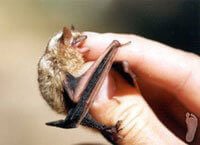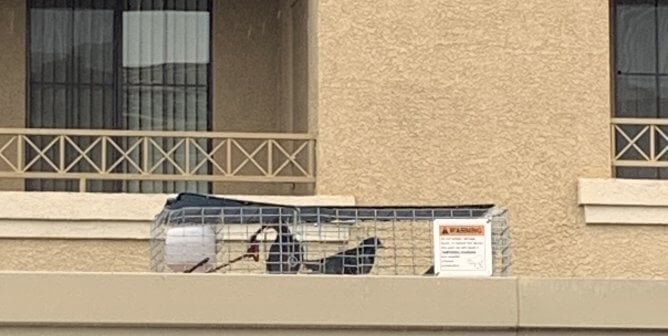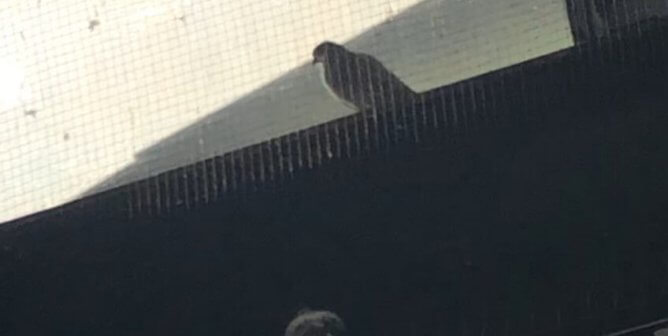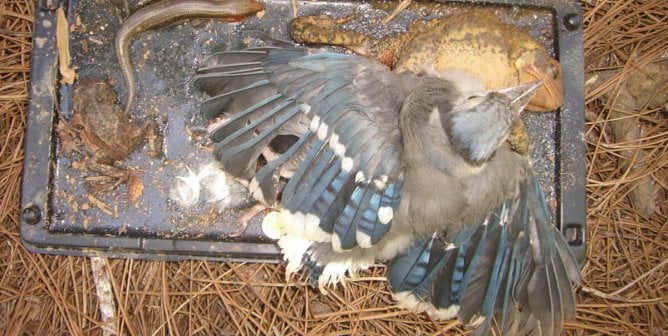Living in Harmony With Bats
The bat’s image has improved considerably in recent years as people have come to know more about these interesting, delicate animals. The only mammals who can truly fly, bats perform a valuable service by controlling populations of mosquitoes and other insects. It is perfectly natural for bats to fly around at dusk as they forage for flying insects. In fact, little brown bats have been observed eating more than 600 mosquitoes in an hour.
More than 40 species of bats live throughout the U.S. and Canada. Some live in colonies; others are solitary. Some roost in buildings, while others won’t go near human dwellings. You can find books and other publications full of fascinating facts about these remarkable animals in any library.
Bats always try to avoid contact with humans and other animals. A bat found outside may be injured, grounded by a storm or pesticides, or ill. In these cases, a bat rehabilitator or wildlife rehabilitator should be contacted for help.
People used to worry that bats transmitted rabies, but the incidence of rabies in bat populations is estimated to be less than 0.5 percent. Bats do not bite unless they are provoked. Even the occasional rabid bat seldom becomes aggressive. However, since bats are a rabies vector species in most places and, like all wild animals, can bite to defend themselves, it is crucial to take all necessary precautions to avoid a potential exposure to the virus. Even apparently healthy animals who bite a human must be killed to test for the virus. Also, because bats groom themselves regularly and rabies can be transmitted through saliva, touching a bat with bare hands that have a wound, abrasion, or scratch is considered a potential exposure to the virus. Even in the direst of emergencies, you are not helping the animal if your actions result in a possible exposure to the virus. For more information on rabies vector species in your area, please contact your local health department or a licensed wildlife rehabilitator.
In case of an emergency in which a bat must be handled, handlers should always use thick gloves and a towel to gently gather up the bat. The bat should be placed inside a box with a secure lid until help can be found.
In any encounter with a bat, stay calm and keep children and animals away.
If the bat is indoors, he or she will probably try to find an opening, taking a U-shaped flight path that is higher near the walls and lower toward the middle of the room—so when you are in a room with a bat, try to stay near a wall.
After closing interior doors, create an escape route by opening a window or door to the outside. If the bat disappears before exiting, he or she may have landed on hanging clothes, behind curtains or upholstered furniture, or in a plant—anywhere where hanging is possible. Try to catch the bat in a net or cover him or her with a wide-mouthed jar or plastic tub and gently work a piece of cardboard between the container and the surface from which the bat is hanging.
You can capture a bat on the floor with a towel. Gather the towel up very gently (be careful not to bruise or suffocate this extremely fragile animal), take the animal outside, and open the towel in a place where the bat will be safe even if he or she doesn’t fly immediately. Wear thick gloves—never use your bare hands.
Bats never make holes in houses. Instead, they enter through existing openings of a half-inch or more. These openings are usually high on the building—where dormers meet roofs, around chimneys, or in loose siding—and, accordingly, bat colonies are sometimes found in attics.
To find entry holes, make careful observations at dusk to catch sight of the bats as they leave for their evening feast. You may also see stains around the entry holes from body oils that can be left when bats enter and exit. Watch potential openings until at least 30 minutes after sundown—it takes only a second or two for a bat to exit and take flight.
Since bats often raise their young in these spaces, do not block their entrance until all the bats leave for their winter hibernation cave in early autumn. Bat colonies should never be excluded before the end of August, as flightless young may be present.
Humane exclusions can then be performed by placing one-way valves or polypropylene bird netting over all the entrance points. The netting should extend at least 2 feet below the hole. Seal the top and sides of the netting with silicone caulk, leaving the bottom open so that the bats can escape. This simple excluder will let the bats emerge but keep them from returning. Once you are sure that all the bats are gone, you can make repairs to ensure that the exclusion is permanent.
Lethal methods using illegal toxicants to control a bat colony are totally unwarranted and can cause far greater harm to the humans in the house than any possible risk that the bats themselves could pose.
All North American bats are nocturnal, and nearly all of them migrate. Bats in colonies will often join solitary bats in caves for hibernation.
Bats feed on insects they catch in flight. They detect these insects by echolocation, the ability to bounce high-frequency sounds (inaudible to humans) off animals or objects in order to locate them. Some bats can detect objects as thin as a human hair.
A bat mother gives birth to a single baby, or occasionally twins, from May through July. Unable to fly for approximately two months, the babies of some species cling to their mothers as they hunt, but all youngsters stay behind when they get too big for their mothers to carry. Nursery colonies contain only mother bats and their babies. While the mothers are raising their young, adult male bats roost elsewhere.
For more information about bats, please visit Bat World Sanctuary.









